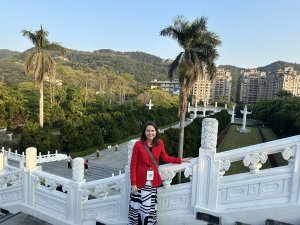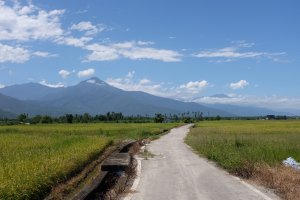“Say goodbye to Taiwan,” wrote political scientist John Mearsheimer in a widely read article in the March-April 2014 issue of The National Interest.1 Threatened by China’s rising economic might and abandoned by a weakening United States, one of Asia’s most vibrant democracies was facing, in his “realist” analysis, an almost inevitable annexation via economic if not military force. “Time,” he wrote, “is running out for the little island coveted by its gigantic, growing neighbor.” But only days after publication, on March 18, activists and armchair analysts alike said hello to a new reality.
That evening, the assembly hall of Taiwan’s Legislative Yuan was stormed by a motley crew led by students from the “Black Island Nation Youth,” a loosely organized student political action committee formed the previous year. The several hundred occupiers repelled police efforts to eject them, escorted out the few officers on duty, and barricaded the doors with seats tied together with rope. None of them expected that the occupation, later known as the 318 or Sunflower Movement, would last twenty-four days, spawn the biggest pro-democracy protest rally in the island’s history, reframe popular discourse about Taiwan’s political and social trajectory, precipitate the midterm electoral defeat of the ruling party, and prefigure unprecedented protest in nearby Hong Kong.2
The direct trigger for the protest was the perceived flouting of parliamentary due process by Taiwan’s ruling party, the Chinese Nationalist Party (Kuomintang or KMT), in its efforts to push a major trade deal with China through the legislature. Indeed, on Monday, March 17, legislators from the KMT reneged on a June 2013 agreement with the opposition party, the Democratic Progressive Party (DPP), for an item-by-item review of the Cross-Strait Services Trade Agreement (CSSTA). Instead of conducting the promised review, KMT legislator Chang Ching-Chung, the convener of the committee, unilaterally declared that the review period had already ended and that the bill would be submitted to a plenary session on March 21. Had this legally questionable process not been interrupted, it was all but certain that the KMT-dominated legislature would have passed the bill for a signature from President Ma Ying-jeou, who had championed its passage.3
The CSSTA was negotiated and signed behind closed doors in Shanghai on July 21, 2013, by representatives from Taiwan’s quasi-state agency, the Straits Exchange Foundation, and its Chinese counterpart, the Association for Relations Across the Taiwan Strait.4 The CSSTA would open eighty sectors of China’s economy to Taiwanese investment, and sixty-four sectors of Taiwan’s economy to Chinese investment, including hotels, tourism, printing, and medical services. The CSSTA followed the Economic Cooperation Framework Agreement (ECFA), a broad agreement for increased economic integration between Taiwan and China, signed in 2009. Both the ECFA and the CSSTA were touted by the Ma administration as major boons for Taiwan’s economy, although the government’s own Chung Hua Institute for Economic Research estimated the latter would bring only a 0.025–0.034 percent increase in Taiwan’s annual gross domestic product (GDP).
To see the full text, please visit https://www.cambridge.org/core/journals/journal-of-asian-studies/article/inside-taiwans-sunflower-movement-twentyfour-days-in-a-studentoccupied-parliament-and-the-future-of-the-region/DB4A7B57538A6F06DC6C8CF0058C8040/core-reader




